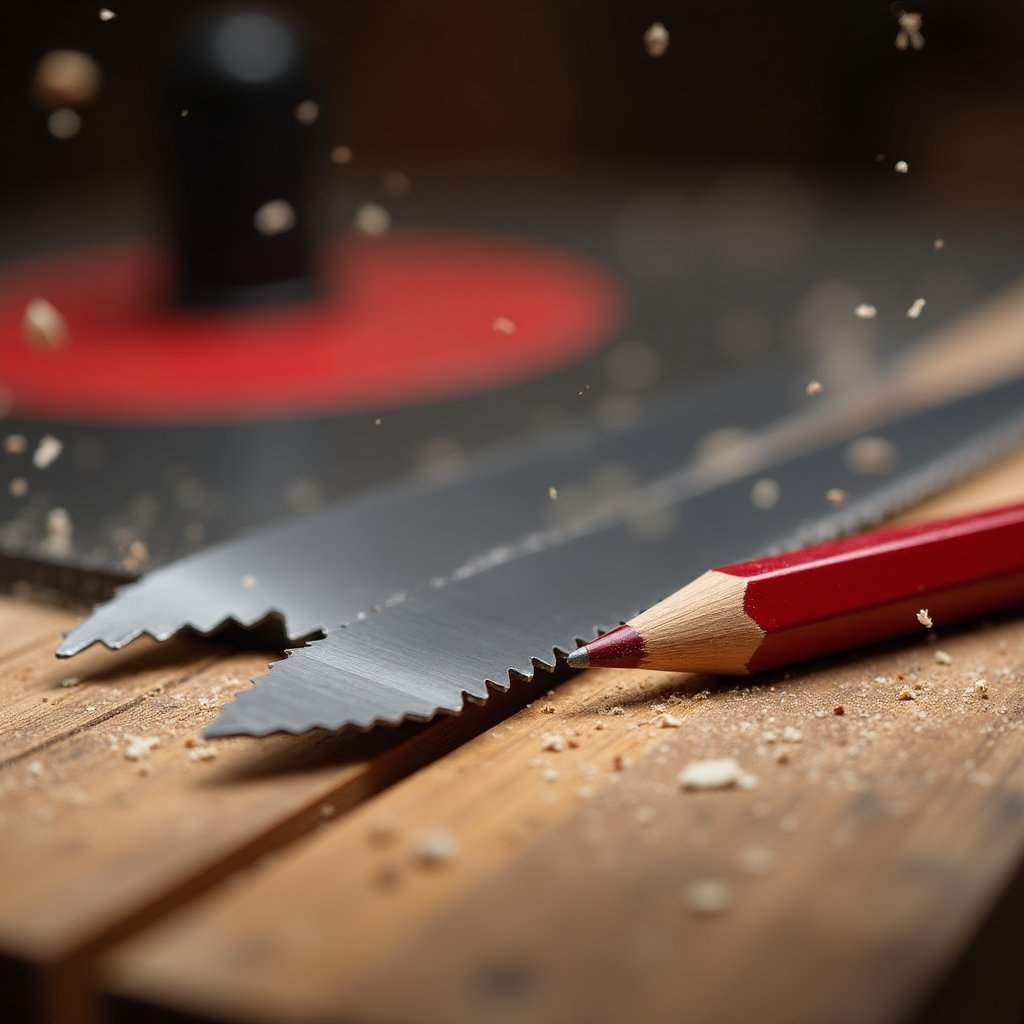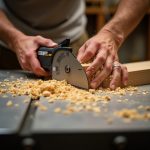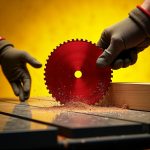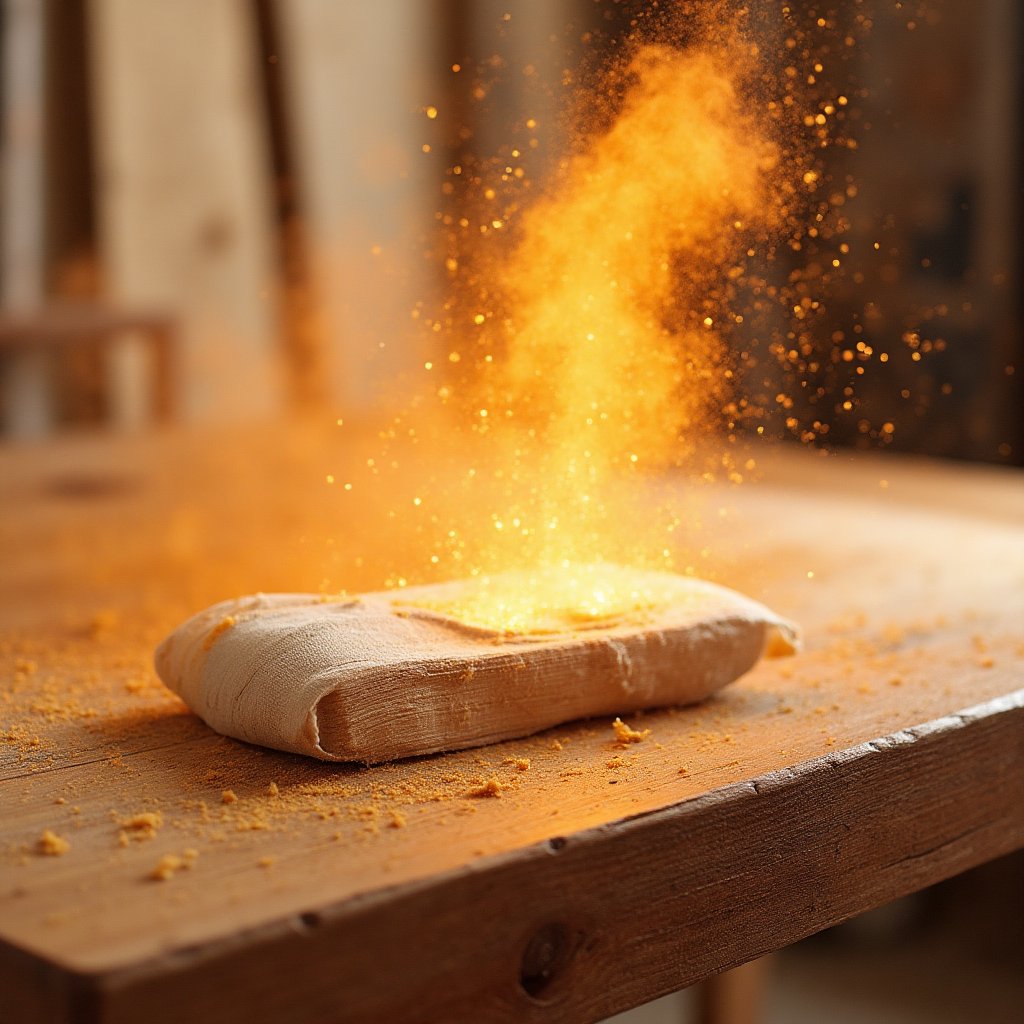When it comes to woodworking, the tools you use can make or break your project. And if there’s one tool that sparks endless debates among woodworkers, it’s the table saw blade. Specifically, the thin kerf blade. Are they a game-changer or just another overhyped trend? Today, we’re diving into the world of table saw blades, inspired by Stumpy Nubs (James Hamilton), a seasoned woodworker who’s seen it all. Buckle up, because this is going to be a wild ride through sawdust and steel.
The Evolution of Saw Blades: From Steel Teeth to Carbide Tips
Let’s start with a trip down memory lane. When Stumpy Nubs first started woodworking as a kid, he used saw blades that were a far cry from what we have today. These blades were smaller (9 inches instead of 10), lacked carbide tips, and were made of plain steel. The teeth had to be sharpened frequently, and the blades were thin—about 0.067 inches thick. Compare that to modern blades, which are around 0.083 inches thick. That might not sound like much, but in the world of woodworking, every thousandth of an inch matters.
What really stands out, though, is how thin these old blades were. They were stamped from steel, with teeth no wider than the blade’s body. This meant they cut a kerf (the width of the cut) no wider than the blade itself. Sounds efficient, right? Well, not so fast. This design could cause binding in thicker wood and lead to dangerous kickback. Yikes!
The Thin Kerf Blade: Savior or Scam?
Fast forward to today, and thin kerf blades are all the rage. They’re about 25% thinner than full-thickness blades, which means they remove less wood and theoretically require less power. This makes them a popular choice for table saws with smaller motors. But here’s the kicker: are they really worth the hype?
Stumpy Nubs thinks not. He argues that thin kerf blades are often overhyped and not always the best choice. Sure, they can help you cut faster and stay cooler, but their thinner bodies are more prone to distortion and vibration. This can lead to blade marks and less precise cuts, especially when cutting hard or thick materials. And let’s be honest, no one wants to spend hours sanding out blade marks.
The Heat Factor: A Hidden Danger
One of the biggest issues with thin kerf blades is heat buildup. Any blade can heat up during a long rip cut, but thin kerf blades are more susceptible to heat distortion. This can compromise the quality of your cuts and even make your saw more dangerous. So, while a thin kerf blade might help you get through that thick piece of oak, it might also leave you with a scorched, uneven cut.
Rip Blades: The Unsung Heroes
If thin kerf blades aren’t the answer, what is? Enter the rip blade. Designed specifically for cutting with the grain, rip blades have fewer teeth and wider gullets, allowing them to cut more efficiently. They’re a great solution for saws that struggle with thicker materials. But here’s the catch: rip blades aren’t designed for crosscuts. So, if you’re looking for a one-blade-fits-all solution, you might be out of luck.
The Convenience Factor
Let’s face it: most of us don’t want to change blades every time we switch tasks. We want one blade that can handle everything. That’s why thin kerf blades are so popular—they’re convenient. But as Stumpy Nubs points out, convenience doesn’t always equal quality. If you’re serious about your woodworking, it might be worth the extra effort to switch blades when needed.
Safety First: The Kickback Debate
Now, let’s talk about safety. Some people argue that full kerf blades can make your saw more dangerous. The idea is that if the kerf closes or pinches against the back of the blade, it can cause kickback. This is where splitters and riving knives come in. These thin strips of metal protect the back of the blade, preventing the wood from pinching and causing kickback.
But here’s where things get confusing. Some manufacturers sell thin kerf and full kerf riving knives, implying that you need to match the riving knife to the blade. However, many blade guards come with splitters that are compatible with both thin and full kerf blades. So, which is it? Do you need a specific riving knife for each blade, or will one size fit all?
Stumpy Nubs’ Take
Stumpy Nubs believes that one size can fit all. The real danger comes from the blade body, not the teeth. If wood pinches against the blade body, you’re in trouble. But the teeth can handle a little pressure, as they’re designed to cut wood. So, as long as your riving knife or splitter is about the same thickness as the blade body, you should be fine. Of course, always follow your manufacturer’s recommendations—they’re the experts, after all.
Final Thoughts: To Thin Kerf or Not to Thin Kerf?
So, should you use a thin kerf blade? The answer, as with most things in woodworking, is: it depends. If you have a low-powered saw and need to cut thicker materials, a thin kerf blade might help. But if you’re looking for precision and safety, a full kerf blade might be the better choice. And don’t forget about rip blades—they’re a great option for heavy-duty cuts.
At the end of the day, the best blade is the one that works for you. Don’t just follow the crowd—think about your specific needs and make an informed decision. And remember, woodworking is as much about the journey as it is about the destination. So, take your time, experiment, and find what works best for you.
Join the iNthacity Community
If you’re passionate about woodworking and want to connect with like-minded folks, consider joining the iNthacity community. It’s a vibrant, supportive space where you can share your projects, ask questions, and learn from others. And if you’re looking for detailed woodworking plans, check out Ted’s Woodworking Plans. It’s a fantastic resource for woodworkers of all skill levels.
So, what’s your take on thin kerf blades? Are they a must-have or just another overhyped tool? Share your thoughts in the comments below, and let’s keep the conversation going. And don’t forget to like, share, and subscribe to stay updated on all things woodworking. Happy sawing!
Wait! There's more...check out our gripping short story that continues the journey: The Thin Kerf Blade
Disclaimer: This article may contain affiliate links. If you click on these links and make a purchase, we may receive a commission at no additional cost to you. Our recommendations and reviews are always independent and objective, aiming to provide you with the best information and resources.
Get Exclusive Stories, Photos, Art & Offers - Subscribe Today!


























Post Comment
You must be logged in to post a comment.